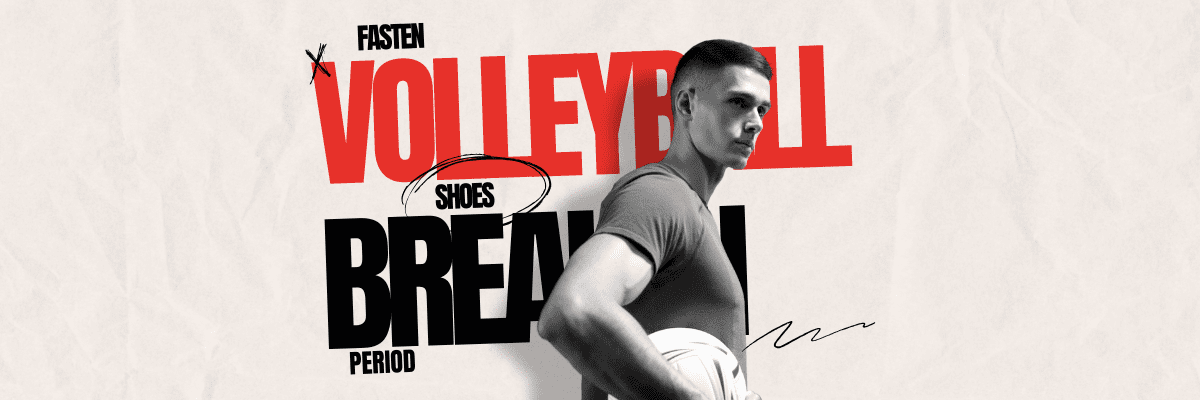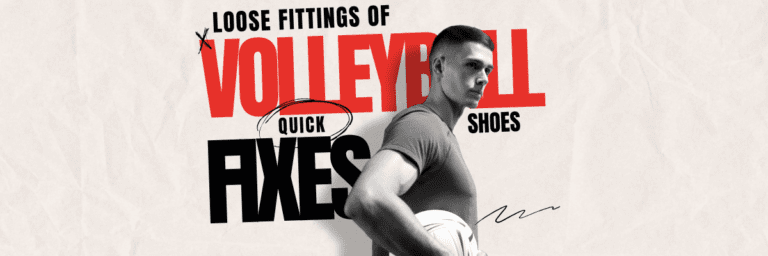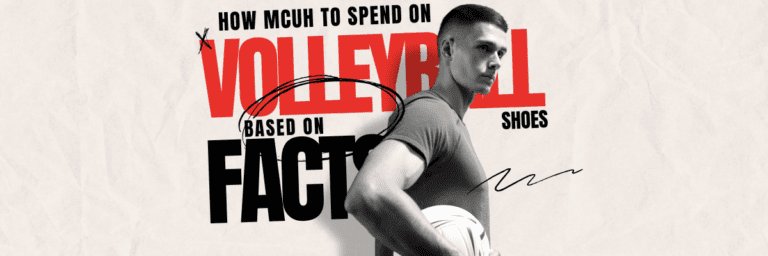How to Break in New Volleyball Shoes: A Comprehensive Guide
Introduction
Ever felt like you were walking on pins and needles in your new volleyball shoes?
Oh, the joy of unboxing a brand-new pair of volleyball shoes! The smell of fresh leather, the unscuffed soles, and the gleaming design promise to make you jump higher and spike harder. But wait, what’s this?
As soon as you take them for a spin on the court, it’s like walking on a bed of nails! If you’ve ever found yourself in this pickle, you’re in the right place. Stick around, because we’re about to take a deep dive into the world of breaking in those unruly volleyball shoes. Trust me, by the end of this article, your feet will be singing a happier tune.
Importance of Comfortable and Well-Fitted Shoes for the Sport
Let’s get down to the nitty-gritty. Volleyball is no walk in the park; it’s a sport that demands agility, speed, and oh-so-many sudden movements. You’re darting left, you’re diving right, and you’re leaping up to make that killer spike.
Your feet are basically the unsung heroes of every match. So, you can’t just throw on any old pair of shoes and expect to play like a pro. Nope, you need kicks that fit like a glove, or, should I say, like a snug ankle brace?
When your shoes fit well and are comfortable, you’re not just avoiding blisters and aches. You’re enhancing your performance, giving you that extra edge to outmaneuver your opponents. Ever tried sprinting in shoes that are too tight?
It’s about as effective as trying to swim with weights tied to your ankles. Plus, let’s not forget the safety angle. Ill-fitting shoes are basically an invitation for twisted ankles and nasty falls. So yeah, getting your new volleyball shoes to fit just right is not just about comfort; it’s a game-changer, literally!
Overview of What the Article Will Cover
So, what tasty tidbits can you expect in this smorgasbord of shoe wisdom? First up, we’ll delve into why breaking in your volleyball shoes is not just a good idea but a must-do. Spoiler alert: It’s not just for the sake of your poor, squished toes.
Next, we’ll look at the different types of volleyball shoes out there because, surprise, not all volleyball shoes are created equal.
After that, we’ll roll up our sleeves and get into the real meat and potatoes: tried-and-true methods to break in those stubborn new shoes. We’ll wrap things up with some do’s and don’ts, because nobody wants to learn the hard way, right?
By the end of this joyride, you’ll be armed with all the know-how you need to transform those new volleyball shoes from torture devices into cloud-like cushions for your feet. So grab a snack, put your feet up (you’ve earned it!), and let’s get cracking!
The Importance of Breaking in Volleyball Shoes
Performance
How Comfortable Shoes Can Improve Your Game
Okay, let’s get straight to the point: volleyball is not a sport for the faint of heart, or, as it turns out, the faint of foot!
Imagine you’re on the court, the ball is soaring through the air, and you’ve got just a split second to make your move. Do you really want to be thinking about how much your feet hurt? Nope, I didn’t think so.
When your shoes are comfortable and broken in, it’s like they become an extension of yourself. You can move faster, jump higher, and dig deeper, literally! Your performance can go from “meh” to “wowzah!” with just the right pair of shoes.
And let’s be honest, nobody ever nailed a killer serve while wincing in pain from a blister. So, if you’re keen on upping your game, you’ve got to start from the ground up. Broken-in shoes are your ticket to volleyball stardom. Or, at the very least, they’ll help you not trip over your own feet.
Safety
How Ill-Fitting Shoes Can Lead to Injuries
Let’s talk safety, because listen up, those shiny new shoes could be a ticking time bomb for injuries. Ever heard of the phrase “adding insult to injury”? Well, ill-fitting shoes don’t just make you uncomfortable; they can actually land you on the bench or, worse, in the ER. We’re talking sprained ankles, twisted knees, and the dreaded plantar fasciitis (that’s fancy talk for “ow, my heel!”).
You see, when your shoes aren’t broken in, they lack flexibility. That rigidity can mess up your natural foot movements, and before you know it, you’re limping off the court like a pirate with a peg leg.
It’s not just your feet at risk either; ill-fitting shoes can throw off your entire posture, leading to back or hip issues. In short, if you don’t want to become an accidental stunt double for a medical drama, break in those shoes, pronto!

Psychological Boost
The Confidence That Comes With Comfortable Footwear
Ah, the sweet smell of confidence! No, it’s not a new fragrance; it’s what you’ll be oozing once your volleyball shoes fit like a dream.
Imagine walking onto the court with your head held high, knowing that you’ve got this. Your feet feel great, your mind is focused, and you’re ready to crush it. That’s the psychological boost that comes with well-fitted, comfortable shoes.
When you’re not distracted by pinching, squeezing, or any other medieval torture your new shoes are putting you through, you can actually focus on the game. You’ll move more freely, you’ll take risks, and you might even pull off that tricky play you’ve been practicing.
In volleyball, confidence can be the game-changer, the little extra “oomph” that turns a close match into a clear win.
Types of Volleyball Shoes
Indoor vs Outdoor
Alright, folks, let’s get one thing straight: not all volleyball courts are created equal. And guess what? Neither are all volleyball shoes. Yep, you heard me right. There’s a world of difference between indoor and outdoor volleyball shoes, and mixing them up is like bringing a knife to a gunfight; you’re just not adequately equipped.
Indoor volleyball shoes are the superheroes of traction.
They have gum rubber soles that practically stick to the floor, giving you the grip you need for those quick pivots and sprints. Plus, they’re usually lighter, because nobody wants to feel like they’re dragging around a pair of bricks while playing.
Outdoor volleyball shoes, on the other hand, are the rugged adventurers of the shoe world. They’ve got thicker soles and are built to withstand the wear and tear of sand or grass courts.
The traction is different, too, designed for grip but also for sliding when you need it. So, before you even think about breaking in a new pair, make sure you’ve got the right type for your playing field. Otherwise, you’re just barking up the wrong tree.
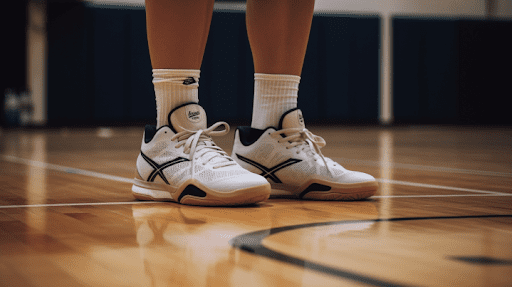
Material Differences
Leather, Synthetic, Mesh, etc.
Ah, the great material or anatomy debate: leather, synthetic, mesh—what’s it gonna be? Each has its pros and cons, and knowing these can help you make an informed (and less painful) decision.
Leather shoes are like the luxury sedans of volleyball footwear. They offer a snug fit and tend to be more durable. But beware; they can also be as stiff as a board initially. You’ll need some patience (and maybe some band-aids for those inevitable blisters) while breaking them in.
Synthetic shoes are the practical, no-nonsense choice. They’re generally lighter and more breathable but might not offer the same snug fit as leather. As for mesh, think of it as the convertible of the group—airy, light, and great for a breezy ride—but perhaps not the most durable option.
Brand-Specific Differences
Ah, brand loyalty, the age-old debate that’s broken up friendships and even families. Okay, maybe not that dramatic, but people do have their favorites. Some brands are known for their cushioning, while others might focus more on ankle support or lightweight design.
Adidas, for example, has a reputation for excellent arch support but can be on the narrower side. Mizuno is often praised for its cushioning and lightweight feel, but it might lack in the durability department. And let’s not forget Asics, which often strikes a balance between comfort and durability but can be a bit pricier.
Each brand has its quirks, and what works for your teammate may not work for you. When choosing a brand, think about your specific needs. Do you need more ankle support? Are you after ultra-light shoes for better agility? Answer these questions, and you’ll be one step closer to finding your perfect match.
Pre-Break-In Steps:
Buying the Right Size
If the Shoe Fits, Wear It
Alright, let’s cut to the chase. You can’t break in what doesn’t fit. It’s like trying to shove a square peg into a round hole; it’s just not going to work, folks. Buying the right size is the first commandment of Volleyball shoe Dom. Ignore it, and you’ll be doomed to a lifetime of sore feet and sloppy plays.
So, how do you find your Cinderella fit? First off, forget your street shoe size; in the realm of volleyball, it’s as irrelevant as a screen door on a submarine. Each brand has its own sizing quirks, so it’s essential to try before you buy.
And please, for the love of all that’s holy, wear your volleyball socks while trying them on. Socks can be the unsung heroes (or villains) of shoe comfort, so don’t overlook them!
Material Check
Knowing Your Shoe’s Material Can help break it in quicker.
Remember our earlier chit-chat about materials? Well, it wasn’t just to fill the awkward silence. The material of your shoes can be a game-changer when it comes to breaking them in. Think of it as your shoe’s personality; some are flexible and easy-going, while others are as stubborn as a mule.
Leather, for example, can be a tough nut to crack. It’s less forgiving and might require more break-in time. Synthetic materials are generally easier to work with, but they might not offer the snug fit that leather does.
Mesh is the easiest to break in but may lack support and durability. So, do your homework, know what you’re working with, and you’ll be two steps ahead of the game.

Initial Inspection and Cleaning
Start with a Clean Slate
Okay, I know what you’re thinking. “Cleaning? They’re brand new, you nut!” Hear me out. Initial inspection and cleaning aren’t just about hygiene; they’re about setting the stage for a successful break-in process.
When you first get those new shoes, give them a once-over. Look for any factory defects, irregularities, or anything else that might cause discomfort down the line. Trust me, it’s better to find out now than mid-game when you’re trying to focus on not face-planting into the net.
Once you’ve given them the all-clear, wipe them down with a damp cloth to remove any residue from the manufacturing process. Some people even recommend a light application of a leather conditioner for leather shoes.
Why? Because starting with a clean, conditioned shoe can actually make the breaking-in process smoother. It’s like greasing the wheels before taking your bike for a spin.
Tried-and-True Methods for Breaking In
The Wear and Tear Method
The wear-methodar The method is all about gradual exposure. Start by wearing your new shoes around the house, and then slowly introduce them to the court through short practice sessions. It’s the “take it slow” approach to breaking in shoes.
Wear Them at Home
Okay, let’s start with the basics. You’ve got a shiny new pair of volleyball shoes, and you’re itching to make them court-ready. But slow down, cowboy! Before you hit the court, try wearing them around the house. Yes, you might look a tad odd vacuuming in volleyball shoes, but it’s a small price to pay for comfort. The idea is to let your feet and the shoes get acquainted in a low-stakes environment.
Short Practice Sessions
Once you’ve done the household rounds, it’s time to take them out for a short spin on the court. But keep it brief! Think of it as a first date; you don’t want to dive into a deep commitment just yet. A 20–30-minute practice session should do the trick. The goal is to start the stretching process without causing any foot trauma. Remember, Rome wasn’t built in a day!
The Wet Sock Technique
It sounds weird, but it’s effective! The Wet Sock Technique involves dampening a pair of socks and then wearing your shoes. The moisture helps the material soften, easing the break-in process. It’s like a spa day for your feet and shoes!
How It Works and Why It’s Effective
Ah, the Wet Sock Technique, the unsung hero of quick break-ins. It sounds a bit icky, but stay with me. You dampen a pair of socks, wear them, and then put on your shoes. The moisture helps to soften the shoe material, making it more pliable. So why does this work? Well, the dampness softens up the shoe material, making it more willing to stretch and mold to your feet. It’s a little like persuading a stubborn jar lid to pop off; it just needs a little coaxing!
The Freezer Method
Turn your freezer into a shoe-stretching haven with this method. Fill a bag with water, place it in your shoes, and freeze them overnight. The expanding ice stretches the shoe material. It’s science and footwear in a chilly embrace!
The Science Behind It
You might think the freezer is for peas and popsicles, but guess what? It’s also a secret weapon for breaking in shoes. The idea is simple: water expands when it freezes. So you fill a bag with water, place it in your shoes, and then stick them in the freezer. As the water freezes and expands, it stretches out the shoe. Science for the win!
Steps to Follow
Before you go tossing your shoes in with the frozen dinners, listen up. Make sure to seal that water bag tightly; we’re trying to stretch your shoes, not create an indoor ice rink. Once you’ve got your shoes and water bags sorted, place them in the freezer and leave them overnight. In the morning, remove the ice bags and let the shoes come back to room temperature before trying them on. Voila!
Manual Manipulation
Sometimes, you need to take matters into your own hands literally. Manual Manipulation involves physically bending and flexing the shoe material to help it loosen up. Think of it as a hands-on approach to achieving the perfect fit.
Bending and Flexing
Manual manipulation sounds like a fancy dance move, but it’s actually all about using your hands to bend and flex the shoes. Grab the heel, grab the toe, and give it a good bend. This can help to loosen up stiff areas and make the shoe more flexible.
Use of Hands vs Tools Like a Shoe Horn
You can do a lot with your bare hands, but sometimes you need a little extra muscle. That’s where tools like a shoehorn come in handy. These can help you apply more force to stubborn areas, making the break-in process a tad easier.
Do’s and Don’ts
Navigating the world of shoe break-in is a bit like walking through a minefield: do it right, and you’ll make it to the other side unscathed; make the wrong move, and, well, you’re in for a world of hurt. So, let’s set some ground rules, shall we?
The Good, the Bad, and the Ugly
What You Should and Shouldn’t Do
First off, let’s talk about what you should do, the good stuff.
Always start slow; don’t rush the break-in process. Like a fine wine, good things take time. Make sure you’re also paying attention to your feet. If you start to feel discomfort or pain, that’s your cue to take a break.
Now, the bad and the ugly Never, and I mean NEVER, try to speed up the process by soaking your shoes in water and then drying them with heat. You’re not cooking pasta here; you’re likely to end up with deformed, unwearable shoes. Also, avoid wearing your new volleyball shoes for a full-length game before they’re broken in. That’s like running a marathon without training; only pain awaits.
Warnings About Shortcuts That Could Ruin Your Shoes
Look, I get it; we all want to find that magical shortcut, the life hack that turns a laborious task into a cakewalk. But when it comes to breaking in volleyball shoes, shortcuts can lead to disaster.
You might come across tips that suggest using oil or other chemicals to soften the shoe material. While this may sound like a quick fix, it can actually deteriorate the material and lessen the shoe’s lifespan.
Another tempting but disastrous shortcut is using external heat sources like a hairdryer to soften the shoes. Sure, it might make the material more pliable in the short term, but it can also weaken the shoe’s structural integrity.
Imagine going for a jump only for your shoe to fall apart mid-air. Not a pretty picture, is it?
Caring for Your Shoes Post-Break-In
Congrats! You’ve made it through the gauntlet of breaking in your new volleyball shoes, and now they feel like they were crafted by angels specifically for your feet. But the journey doesn’t end here.
A well-broken-in shoe is a treasure, but like any treasure, it requires proper care to keep its value. So, how do you make sure your volleyball shoes stay in tip-top shape? Read on, my friend.
Regular Cleaning
Cleanliness is Next to Godliness
Let’s face it, after a grueling match or practice, your shoes are going to be, well, less than fresh. And while a little dirt never hurts anyone, leaving your shoes filthy is a one-way ticket to Wear-and-Tear Town.
Regular cleaning isn’t just about aesthetics; it’s about maintaining the shoe’s structural integrity. You don’t need to go full Cinderella on them, but a gentle wipe-down after each use can go a long way.
For a deeper clean, some warm water and mild soap should do the trick. Just remember, no harsh chemicals or abrasive brushes; they’re shoes, not a greasy oven!
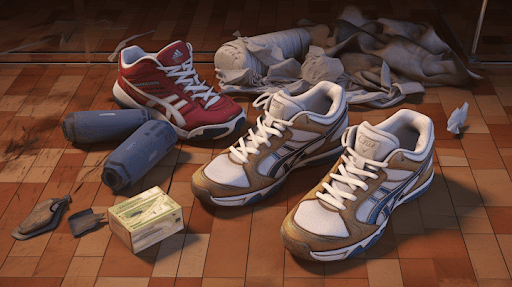
Proper Storage
Keep Them fresh; Keep Them Fine!
Storing your shoes properly is like giving them a five-star hotel experience; they’ll repay you by staying fabulous. Avoid tossing them into the dark abyss of your closet, where they can get squished or misshapen.
Instead, give them some breathing room. A well-ventilated area is ideal, and shoe trees can help them maintain their shape. If they’re particularly sweaty or damp, stuffing them with newspaper can absorb the moisture and prevent odors.
In a nutshell, treat your shoes like you would a prized pet; give them a comfy home!
Repair vs Replace
When Is It Time to Say Goodbye?
Ah, the million-dollar question: When should you repair, and when should you just let go? Small issues like loose stitching or a slight sole detachment can often be repaired. But if the cushioning is shot or the soles are as flat as a pancake, it’s time to say adios.
Continuously using worn-out shoes isn’t just bad for the shoes; it’s bad for your feet and can even affect your performance. So, when you start to notice significant wear and tear, it might be time to start the break-in process all over again with a new pair.
Conclusion
Summing Up the Journey from “New-Shoe Blues” to “Comfortable and Ready to Use”
Wow, what a ride it’s been! From the moment you opened that shoebox and took a deep breath of the “new shoe” scent to the trials and tribulations of breaking them in we’ve covered a lot of ground, haven’t we?
Remember the days of walking on pins and needles? Well, kiss those days goodbye because now you’re gliding on air. You’ve learned the ins and outs of volleyball shoe types, the do’s and don’ts of breaking them in, and even how to care for them post-break-in. You’re not just a volleyball player now; you’re a bona fide shoe whisperer!
Final Thoughts and Encouragement
Put Your Best Foot Forward!
So, what’s next on the agenda? Simple: Go out there and rock that volleyball court like you own it. You’ve got the knowledge, you’ve got the shoes, and most importantly, you’ve got the spirit.
It’s like they always say, “Put your best foot forward,” and in your case, that foot is snugly fitted in a well-broken-in volleyball shoe.
Breaking in new volleyball shoes is no small feat pun intended but you’ve conquered it. And let’s be honest, if you can do this, what’s stopping you from spiking that ball straight into the victory zone?
So, lace up those beauties, take your position on the court, and show the world what you’re made of. You’ve got this!
Frequently Asked Questions (FAQs)
How do you break in volleyball shoes fast?
The essay recommends the Wet Sock Technique for speed. Wear wet, wrung-out socks before volleyball shoes. Dampness softens shoe material, making it flexible. When time is short and you need to break in your shoes for a game or practise, this approach is ideal.
Do volleyball shoes need to be broken in?
Volleyball shoes must be broken in for safety and performance. New shoes may be stiff and unpleasant, affecting court agility. New or ill-fitting shoes might cause sprains or blisters. Breaking them in ensures that the shoes fit your feet and give support and comfort throughout the game.
Are volleyball shoes supposed to be tight?
Volleyball shoes should fit snugly but not painfully. Performance requires grip and support from a well-fitted shoe for fast movements and leaps. Put on your volleyball socks while trying on new shoes for a better fit. Shoes that are overly tight might cause foot discomfort and other issues.
How do you break in new shoes fast?
The article proposes the Wet Sock Technique and Freezer Method for rapid break-in. Using moist socks softens shoe material, making it easier to mold to your feet. The Freezer Method involves freezing water bags in shoes to stretch them. Both approaches work faster than wear-and-tear.
Should volleyball shoes be slippery?
Volleyball shoes should not slide. They provide excellent court traction for rapid, nimble movements. Indoor volleyball shoes commonly have gum rubber bottoms for grip. Slippery shoes may hinder performance and increase court fall and injury risk.
How do you know if volleyball shoes are good?
Comfort, durability, and performance are essential for volleyball shoes. Fit should be comfortable without being excessively tight or loose. They should also support the ankle and have decent court traction. Brand reputation, consumer feedback, and personal testing may reveal shoe quality. Consider arch support and cushioning demands.
How to break in shoes in 2 days?
The Wet Sock Technique and Freezer Method are great for breaking in shoes rapidly. The Wet Sock Technique softens socks by wearing them with shoes. The Freezer Method stretches shoes using freezing water. Both approaches may deliver results quickly, making them ideal for 2 days.
Does it hurt to break in shoes?
The Wet Sock and Freezer Methods break in shoes quickly. Wet Sock Technique softens socks by wearing them with shoes. This method extends shoes using cold water. Both methods may provide results rapidly, making them perfect for 2 days.
How long do shoes break in?
Shoe material and break-in procedures affect break-in time. A comfortable fit may be achieved in a week with at-home wear, brief practise sessions and focused approaches like the Wet Sock Technique. However, leather may take longer to break in.
Does Vaseline help break in shoes?
The article advises against breaking in shoes with Vaseline or other chemicals. Vaseline may temporarily soften the material, but it may also degrade it and shorten the shoe’s lifetime. Keep to tried-and-true procedures to avoid shoe damage.
What to do if new shoes hurt?
If new shoes hurt, stop wearing them and reevaluate. Check for size issues or particular discomfort points. Since ill-fitting shoes may cause long-term foot issues, switching sizes or styles may be essential.
Does water help break in shoes?
Water may break in shoes, especially using the Wet Sock Technique. Wet socks and wear them with shoes may soften the material and make breaking them in easier. However, the shoes must dry naturally to retain their form.
Is it OK to soak shoes in water?
Not soaking shoes in water and drying them with heat is advised. Deformation and shoe damage may result. Use safe, effective ways.
Is it normal for new shoes to be tight?
New shoes should fit snugly but not too tight. Breaking them in makes them more comfy. Remember to test on new shoes with your game socks for the best fit.
How do you break in shoes in an hour?
Since shoes take longer to break in, the article doesn’t recommend a one-hour strategy. While the Wet Sock Technique and Freezer Method speed up the process, they still take time to work.
How many hours should I soak my shoes?
The article warns against wetting shoes to break them in. Heat drying after soaking might ruin shoes.
Does hot water damage shoes?
Hot water weakens shoe glue and materials, so don’t break them in with it. Use safe, effective ways.
Should I soak my shoes in hot or cold water?
Neither is advised. Shoes flex when soaked, and hot water damages them. Use the Wet Sock Technique or Freezer Method for safe and successful break-ins.

